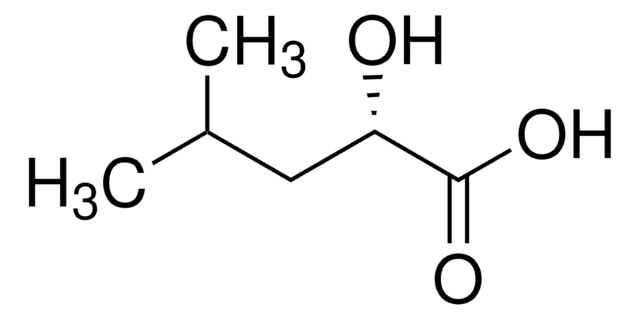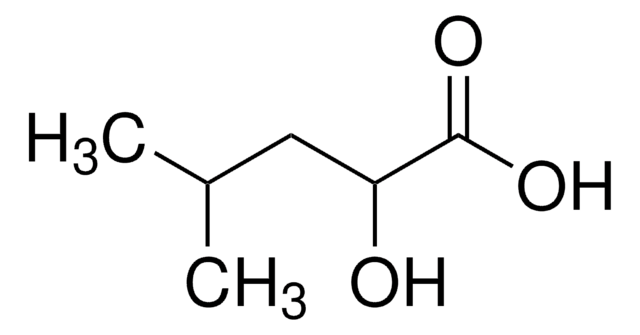113069
L-(−)-3-Phenyllactic acid
98%
Synonym(s):
(S)-(−)-3-Phenyllactic acid, (S)-2-Hydroxy-3-phenylpropionic acid, L-3-Phenyllactic acid
Sign Into View Organizational & Contract Pricing
All Photos(3)
About This Item
Linear Formula:
C6H5CH2CH(OH)CO2H
CAS Number:
Molecular Weight:
166.17
Beilstein:
2209792
EC Number:
MDL number:
UNSPSC Code:
12352002
PubChem Substance ID:
NACRES:
NA.22
Recommended Products
Quality Level
Assay
98%
form
solid
optical activity
[α]24/D −20.8°, c = 2 in H2O
mp
122-124 °C (lit.)
functional group
carboxylic acid
hydroxyl
phenyl
SMILES string
O[C@@H](Cc1ccccc1)C(O)=O
InChI
1S/C9H10O3/c10-8(9(11)12)6-7-4-2-1-3-5-7/h1-5,8,10H,6H2,(H,11,12)/t8-/m0/s1
InChI key
VOXXWSYKYCBWHO-QMMMGPOBSA-N
General description
L-(-)-3-Phenyllactic acid has been used in the development of degradable self-assembling depsipeptide nanofibers.
Storage Class Code
11 - Combustible Solids
WGK
WGK 3
Flash Point(F)
Not applicable
Flash Point(C)
Not applicable
Personal Protective Equipment
dust mask type N95 (US), Eyeshields, Gloves
Choose from one of the most recent versions:
Already Own This Product?
Find documentation for the products that you have recently purchased in the Document Library.
Customers Also Viewed
Controllably degradable ?-sheet nanofibers and gels from self-assembling depsipeptides.
Tian YF, et al
Biomaterials Science, 1(10), 1037-1045 (2013)
Jie Xu et al.
Evidence-based complementary and alternative medicine : eCAM, 2013, 809128-809128 (2013-05-22)
Prebiotics, probiotics, or synbiotics can be used as means to regulate the microbiota to exert preventative or beneficial effects to the host. However, not much is known about the effect of the gut microbiota on hypertension which is a major
Ye F Tian et al.
Biomaterials science, 1(10) (2013-11-14)
Self-assembled peptide materials have received considerable interest for a range of applications, including 3D cell culture, tissue engineering, and the delivery of cells and drugs. One challenge in applying such materials within these areas has been the extreme stability of
Wanmeng Mu et al.
Applied microbiology and biotechnology, 95(5), 1155-1163 (2012-07-12)
3-Phenyllactic acid (PLA), which is an organic acid widely existing in honey and lactic acid bacteria fermented food, can be produced by many microorganisms, especially lactic acid bacteria. It was proved as an ideal antimicrobial compound with broad and effective
Emanuele Armaforte et al.
Journal of chromatography. A, 1131(1-2), 281-284 (2006-09-12)
Phenyllactic acid (PLA) is an organic acid produced by some strains of lactic acid bacteria (LAB) and concentrations higher than 7.5 mg/ml inhibit growth of moulds and yeasts. Since PLA can be used to select LAB, a rapid, simple and
Chromatograms
application for HPLCOur team of scientists has experience in all areas of research including Life Science, Material Science, Chemical Synthesis, Chromatography, Analytical and many others.
Contact Technical Service










